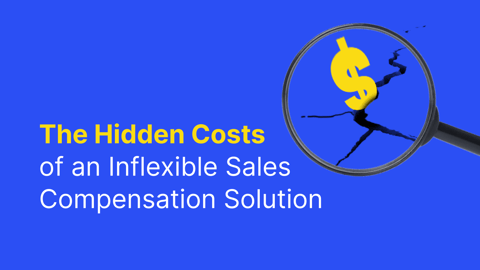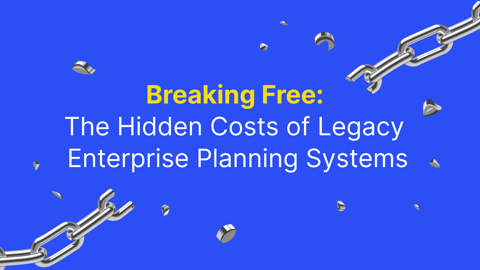If you’re a leader looking to maximize the growth of your business, you’ll likely want to execute cross-selling and upselling opportunities across the organization.
After all, the most challenging part of selling is selling to new customers. You have to absorb all the marketing and sales costs, making these new customers comparatively unprofitable early in their relationship with you.
Selling to existing customers is – by comparison – much easier because you’re already a known quantity to them. You already have a contractual relationship with them, and you have the inside track on many of the challenges they’re trying to solve. This enables you to get a clearer picture of what other solutions in your portfolio they may need.
As well as driving more rapid growth, hoped-for ‘synergies’ are evident in many pitch presentations for merger and acquisition (M&A) activity in companies. The business case for many M&A initiatives is often based on securing new customers for products and services, utilizing a range of cross-sell initiatives, and securing cost savings.
However, as we can see regularly, some companies grow faster than others, and some mergers work, and others don’t. While this can come down to a host of reasons, senior managers can optimize their chances for success by taking a systematic and planned approach to delivering their cross-selling and upselling initiatives.
This blog will explore how to optimize your incentive model to maximize your opportunities for cross-selling and upselling and look at the type of capabilities you’ll need to achieve that. We’ll also explore how to implement a solution that allows you to drive your business forward in the most effective way.
But before that, let’s go back to the fundamentals and explore all the aspects of an incentive model that you’ll need to think about.
- How Do Incentive Models Work?
- How Do You Optimize Your Incentive Plan for Cross-selling and Upselling?
- Identify Potential Cross-Sell and Upsell Opportunities
- How Do You Implement These Capabilities?
How Do Incentive Models Work?
Incentive models are designed to motivate a company’s customer-facing teams to remain relentlessly focused on customers’ needs. The goal is to inspire behavior that maximizes the revenue stream for the coming sales year. These plans typically cover salespeople, managers, business development reps, pre-sales teams, customer success teams, and sales operations staff.
Incentive plans will have various elements that need to be captured and understood.
A Base and Variable Component
Almost all customer-facing employees will have a mixed base/variable compensation model. The vast majority of sales roles have a base element that provides an income for salespeople while they develop new opportunities, qualify them, and close them. In many B2B roles, this base/commission split is typically 50/50 to provide the final On Target Earnings (OTE) measure.
The variable element will comprise the commission-based variable incentive, which allows salespeople to determine, to a significant extent, what they earn over a year.
Other employees engaged in the sales process will likely receive an 80/20 or 85/15 base/variable model, with the variable a function of the overall sales performance of the business.
The Commission Structure
For salespeople, the commission structure has a significant impact on the effectiveness of a sales team.
Clearly, the commission paid to a salesperson typically is a defined percentage of the overall transaction value.
Typically, higher commission rates are paid when a salesperson is on a low base, compared with the OTE of their role. Lower commission rates are typically paid when a salesperson is part of a 50/50 model touched on earlier.
Commission rates will vary according to the type of revenue involved too. Higher margin product revenues typically attract higher commission rates than lower-margin services requiring a salaried employee to deliver them. Maintenance and support revenues may attract the lowest margin or may not be commissioned at all. A commission structure may also favor new business, recognizing the more significant effort required to close new business.
Kickers and Accelerators
Companies may add ‘sales kickers’ that provide additional commission payments over the base level to incentivize and reward overperformance. These are often used to encourage salespeople to close business earlier in the sales. Kickers may also be used to promote the sale of new products or services to existing customers too, and often feature in a cross-selling and upselling campaign initiative.
Accelerators are typically used to incentivize overachievement significantly. Once a salesperson has achieved their 100% quota - which often involves an incentive trip as a reward too – their commission rate for everything they sell after that achievement may double, for example, offering scope for significant earnings.
Bonus Payments
While commission-earning salespeople typically don’t receive bonuses, the people around them who support their sales effort usually do. Bonus eligible roles are typically roles like pre-sales specialists, whose role is to deal with more technically complex aspects of the sales process that are better handled by someone other than the salesperson. There’ll likely be business development representatives whose function is to help qualify sales leads and opportunities and nurture them to the point where they can be handed over to the sales team for further development and closing. There may also be sales operations staff who manage the commission and bonus plan, ensure everyone is paid correctly when needed, and explore new ways to incentivize the sales team.
Customer success teams also need to be part of the bonus planning model. Their role is often to engage with a customer post-sales and post-implementation, help the customer adopt a product or service more swiftly, drawdown user licenses more quickly, and maximize the value of the contract to a business in the shortest time. Their bonus may be designed around customer satisfaction metrics, product usage or registration metrics, and identifying cross-sell and upsell opportunities, where their ability to have hands-on exposure to customer issues makes them a valuable source of market intelligence.
Other Incentives
A sales function will also include other incentives to keep the sales team focused and engaged – listening to customers saying ‘no’ all the time requires a particular kind of resilience. These incentives might be prizes, team events, or special promotions to promote specific products or services.
How Do You Optimize Your Incentive Plan for Cross-selling and Upselling?
Companies already understand the value and significance of cross-selling and upselling. It’s already part of many commission plans; it’s one of the ways that an account manager can achieve their quota. Sales managers typically see the ability to cross-sell or upsell as part of the job description.
But this process can be a bit hit or miss for a company looking to increase turnover rapidly. An opportunity to cross-sell or upsell a customer might be missed if an account manager’s attention is focused elsewhere. Territory planning isn’t always ideal, and it’s easy for one salesperson to have too much opportunity and another too little. Equally, it takes time for someone selling one type of solution to become an expert in another. Sales teams need all the help they can get.
If a company is looking to significantly ramp up its revenues from cross-selling and upselling, in our experience, it needs to take a systematic approach to identify and exploit opportunities that can drive initiatives and, ultimately, results.
So, how might you achieve that? What are the steps?
Identify Potential Cross-Sell and Upsell Opportunities
The first step is to determine how many customers you have that you could potentially cross-sell or upsell to. Depending on the products and services you’re selling, this may or may not be straightforward.
Let’s look at a practical example.
Let’s say your company sells a marketing automation platform, which is especially effective at helping build a website, track leads, and run digital marketing campaigns. It could be licensed per number of users and the number of records in its database. So far, so simple.
You then decide to add new functionality that allows you to track these leads through the online and in-person sales process, so it becomes a sales management platform that can help with forecasting, business management, and marketing automation.
Later on, you decide to develop a finance application using new invoicing management capabilities that tie in with your ability to track marketing leads, sales opportunities, and deals.
Let’s look at what cross-selling and upselling might mean in this example.
The easiest option is to sell more license capacity as clients use your platform more. Maybe they’ll come to you to buy more licenses, or perhaps you automatically invoice them when they go over their licensing limit. Alternatively, your customer success team may engage with customers approaching their limit to see how they can get more out of your platform.
Selling your sales management add-on might be seen as upselling or cross-selling, depending on where the decision-maker sits. It’ll be more complicated than selling additional capacity, but there are options. You can sell a sales pipeline and forecasting management capability to a marketing director responsible for online sales. Selling a sales management capability to a sales manager will be sensible, provided there’s a sales force to manage. Either way, you need to know how companies implement their go-to-market models.
Selling the finance add-on will be more challenging since it’ll involve engaging with the CFO with whom there’ll likely have been less engagement. The CFO may already have their preferred systems, despite the obvious business value this solution may offer.
Looking at this simple scenario highlights the multiple threads involved in driving a systematic approach to cross-selling and upselling:
- You need to identify your customers
- You need to know when there might be suitable opportunities to cross-sell or upsell
- You need to identify the right people
- You need to understand their likely or actual issues
- You need to know how best to position your new option to them
- You need to know how all your products integrate well with each other and the synergies they provide
You can add to this list, but mastering all this (and more) will need large volumes of data, and input from multiple functions in the business, from sales, marketing, finance, and operations at the very least.
While seemingly complex – we can show you how revenue intelligence capabilities can do much of the heavy lifting for you:
- You’ll be able to identify which customers are likely candidates for upselling and cross-selling
- You’ll be able to understand which persona will likely be the most receptive to your messaging
- You’ll be able to develop targeted sales and marketing campaigns that can build a pipeline for your sales team when they need it
- You can align product development and training initiatives around transitioning your existing customers to your other products and services more smoothly
- You can align your commission, bonus, and quota models around your upselling model to motivate all your customer-facing employees and teams
How Do You Implement These Capabilities?
In a process as complex and cross-functional as this, it’ll likely come as little surprise that technology plays a significant role in capturing and analyzing large volumes of data. You’ll also need capabilities that allow people to review and interpret the results, regardless of where they’re located.
Capture and Consolidated Your Key Business Data
The first step is to capture and consolidate the core data sets you want to use to find the key information you’ll need to begin making your plans.
This will likely include data from your finance systems, sales and marketing systems, online systems, and various industry sources that highlight potential target companies and their subsidiaries, target sector and segment data, as well as business metrics like headcount, turnover, and sector definitions. This consolidated data set will include information about how customers engaged with you during the sales cycle and how long it took to go from lead to opportunity and opportunity to close. You can see the dynamics of your sales and marketing process and the results of different engagement models and negotiation strategies.
Leverage AI to Analyze and Review the Data
As you’ll see from this simple review, the potential volumes of data you’ll be managing are potentially vast – far more than you can drop into a spreadsheet.
Approached the right way, you can analyze the data to identify those customers best positioned for cross-selling and upselling in the short, medium and long term. A consolidated data set can utilize AI capabilities to find patterns in your data that show which sectors, segments, and compelling events trigger cross-sell and upsell opportunities. For example, the best sector to look at might be the retail industry, looking to gain efficiency savings, or perhaps financial services businesses, looking for ways to create new products. The data will help you prioritize where you focus your sales and marketing effort to drive the business forward systematically.
AI capabilities allow you to get on with the ‘day job’ while the platform does the research. There’s scope for you to get involved and develop your own areas of study too.
Develop Your Campaigns Plans
With the insights gained, you’ll be able to identify the most likely areas of success, whether you view the opportunity by product, geography, sector, or segment. You can then pull together everything you need to drive results – customer lists, contact plans, special marketing promotions, sales training – whatever are your preferred sales and marketing campaign toolsets.
Develop a Quota Plan and Incentive Plan That Will Get You the Results you need
Designing an incentive plan to drive cross-selling and upselling needs careful thought because it must form part of the standard incentive plan.
For salespeople, the commissions that encourage cross-selling and upselling need to be easy to understand and manage. When they close a deal, they should know how much they’ll be paid. Use incentive compensation management capabilities to help create commission models that reward the extra effort needed to reach further across the customers’ business to identify those business issues that you can help solve with your new offerings. Use ‘what if’ scenario models to optimize a commission model that works for the sales team and the business.
You can apply the same idea to designing bonus models for non-commissioned sales employees.
The other side of the equation are the territory quotas. There’s no point in giving a territory with a high cross-sell and upsell quota if there isn’t the opportunity to support it. Use sales planning tools to identify those customers who likely have the highest propensity over the next 12 months to expand the product or service set they buy from you. If you use that as a basis for a territory quota, your salespeople will be more likely to engage in the campaign.
For managers, these capabilities are hugely powerful. Very rarely will a salesperson be solely targeted purely on cross-selling and upselling. More commonly, this component will be tied up with a ‘standard’ commission model, comprising a range of potential revenue streams.
Having a holistic view of all potential opportunities, including the cross-selling and upselling opportunities, means they can design quota and incentive models that drive the right behavior with customers. This also helps eliminate incentive conflicts and unintended consequences that can mar an otherwise well-constructed plan. It also makes it easy to manage what might become a very sophisticated incentive model that the business needs to have in place to meet its myriad objectives.
Learn more with our eBook for insights into Unleashing The Future Of Sales Operations With Technology to help you achieve your revenue goals.



